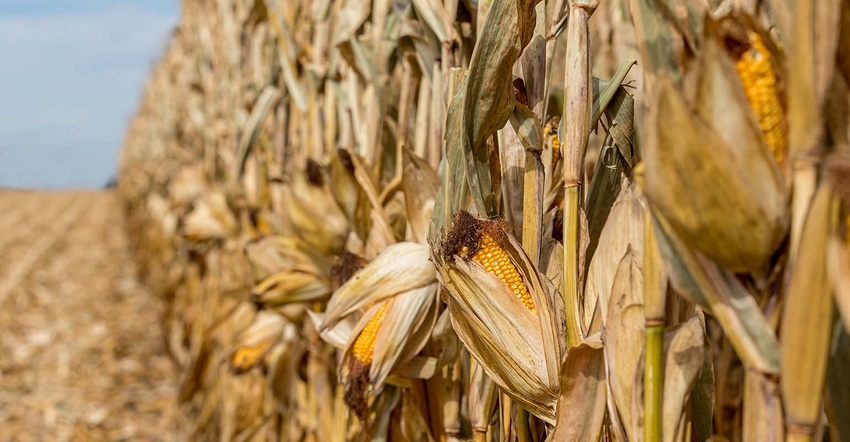
One year ago, coming into 2021, the markets had come to life after the doldrums of the 2015-2019 era. To start January, most in the farming community felt good about the outlook for a solid 2021 when it comes to income. I’m not sure many of us could have guessed we’d see things turn out as good as they did. I’d like to look at just how good the year was and challenge us to think about what would happen if 2022 trended in the other direction.
To close the calendar Dec. 31, 2020, we saw March21 corn settle at $4.84 while March21 beans settled at $13.11. This year on Dec. 31 we saw March22 corn settle at $5.93 ¼, while March22 beans settled at $13.39 ¼.
Record yields, lower input prices
Helping to shed light on why 2021 was such a good year for most, let’s make note of the USDA yield for ’21 corn, which was an all-time record to date at 177 bushels per acre. Given elevated prices AND big yields, it’s easy to see why ’21 was such a great year.
Additionally, the change in fertilizer prices from the fall of 2020 to the fall of 2021 is nothing short of phenomenal. In the fall of ’20, when producers were prepping for the ’21 crop, prices for Di-Ammonium Phosphate (DAP) was running in the $400/ton range while Potash was running around $330/ton and anhydrous ammonia (NH3) was running $475/ton. If you compare that to spot fertilizer prices for the fall of ’21 (2022 crop) at $1,000 for DAP, $900 for Potash and $1,500 for NH3, the difference per acre is rather large. For N, P and K a year ago, per acre costs were running in the $170/acre range for a typical program in central Illinois where I farm. This past fall, if a person was paying spot prices listed in this article, it was costing around $425/acre for the same program for N, P and K!
Obviously, a $255/acre difference is quite large. I’m well aware many producers took advantage of the opportunity to prepay their fertilizer heading into this last fall at lower prices than we’re talking here, but even at prepay prices, per acre costs were running around twice the cost per acre of what we saw applied for the ’21 crop.
Therefore, producers had the lowest fertilizer costs we’d seen in years attached to the ’21 crop and the highest price for corn we’d seen in years. Per acre net profits for corn farmers were as high as most had seen since the 2012/2013 years as we came off the high prices attributed to 2012’s drought.
Changes for 2022
One thing for producers to think about is what might happen if commodity prices trend back towards prices we saw just a year ago. Given our fertilizer costs are as high as many producers have ever paid, a dip in the price of corn would be devastating for those who don’t have a risk-management plan in place. For instance, if we saw corn prices drop in the same manner in 2022 as what we saw in 2021, the swing in profit margins would likely not only drop but dip heavily from profit margins to losses.
For instance, a 200-bushel yield in 2021 at the end-of-year price of $5.93 would have netted in excess of $400/acre for a grower with average operating costs. However, if in ’22 we fall the $1.10/bu we rallied in ’21 and sold corn a year from now at $4.84, that same 200-bushel yield would would result in a net loss in excess of $175/acre.
The bottom line for producers is to realize there are no guarantees with regards to these markets. When we have as much invested in a crop as we do for the 2022 crop, it is wise to manage the risk for our farms that comes along with those costs. With December22 corn settling at $5.46 on the last day of 2021, there is still profit to be locked in, and if a producer puts an appropriate strategy, they can still participate in at least a portion of rallies that might occur in 2022.
I wish you a Happy New Year and much success for 2022!
Feel free to reach out to me or anyone on the AgMarket team. We'd love to hear from you.
Reach Matt Bennett at 815-665-0462 or [email protected].
The risk of loss in trading futures and/or options is substantial and each investor and/or trader must consider whether this is a suitable investment. AgMarket.Net is the Farm Division of John Stewart and Associates (JSA) based out of St Joe, MO and all futures and options trades are cleared through ADMIS in Chicago IL. This material has been prepared by an agent of JSA or a third party and is, or is in the nature of, a solicitation. By accepting this communication, you agree that you are an experienced user of the futures markets, capable of making independent trading decisions, and agree that you are not, and will not, rely solely on this communication in making trading decisions. Past performance, whether actual or indicated by simulated historical tests of strategies, is not indicative of future results. Trading information and advice is based on information taken from 3rd party sources that are believed to be reliable. We do not guarantee that such information is accurate or complete and it should not be relied upon as such. Trading advice reflects our good faith judgment at a specific time and is subject to change without notice. There is no guarantee that the advice we give will result in profitable trades. The services provided by JSA may not be available in all jurisdictions. It is possible that the country in which you are a resident prohibits us from opening and maintaining an account for you.
The opinions of the author are not necessarily those of Farm Futures or Farm Progress.
About the Author(s)
You May Also Like






